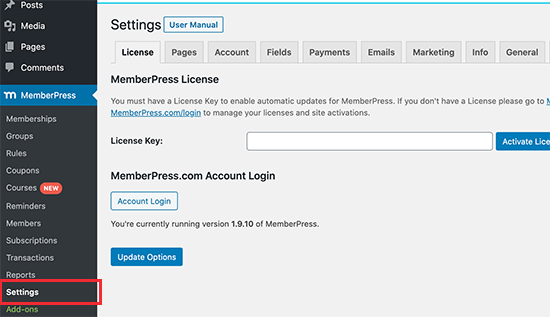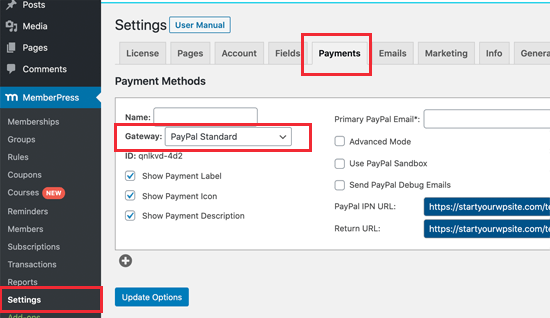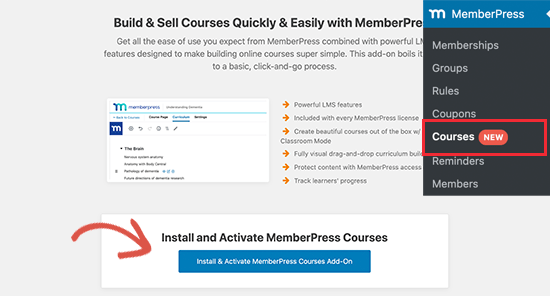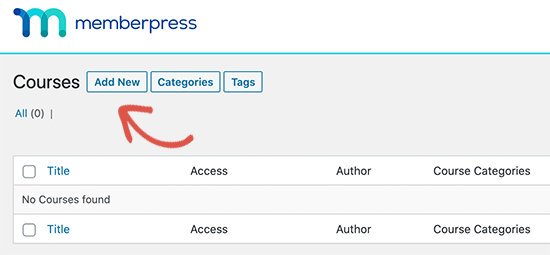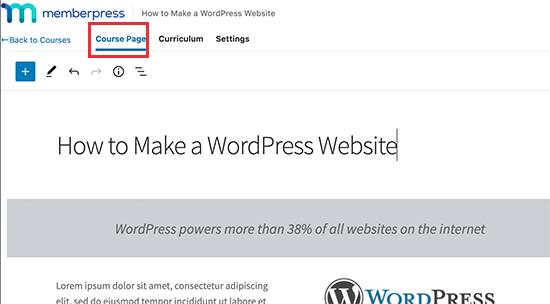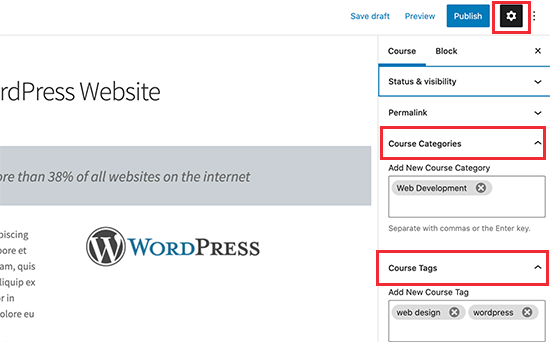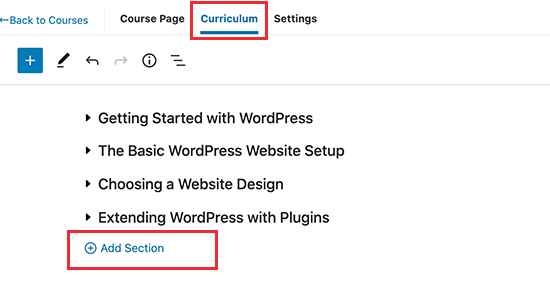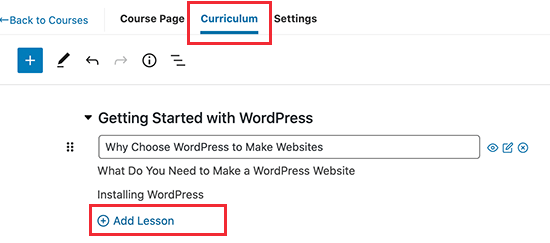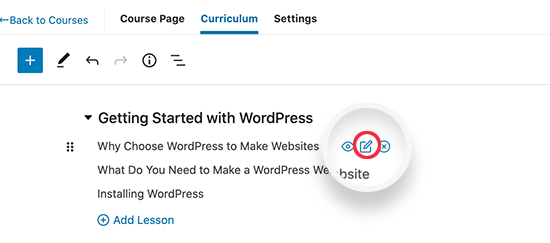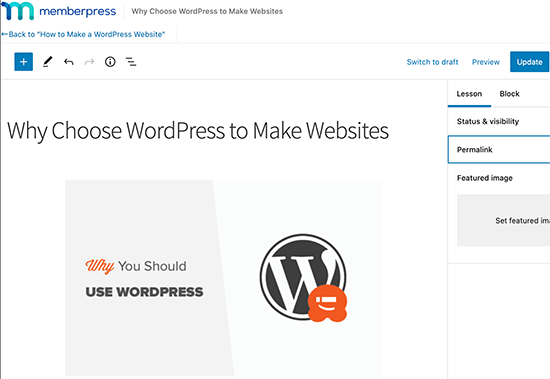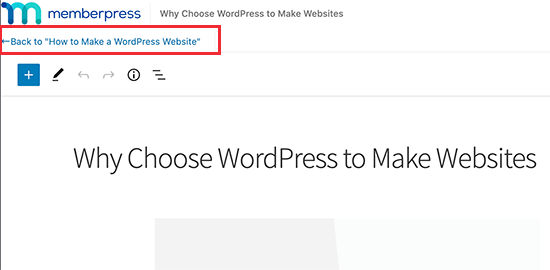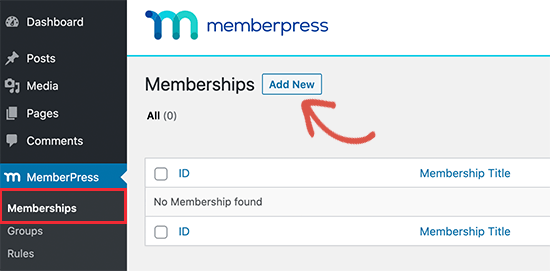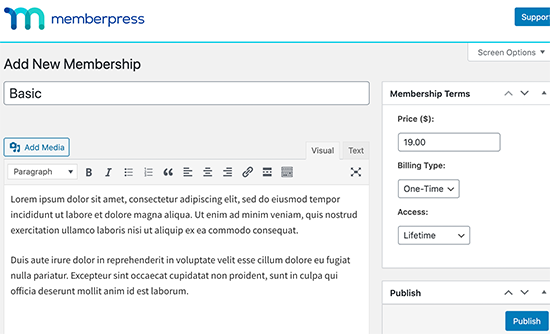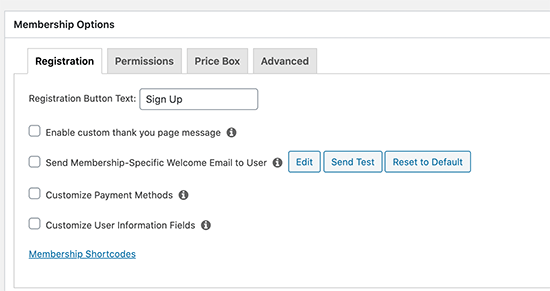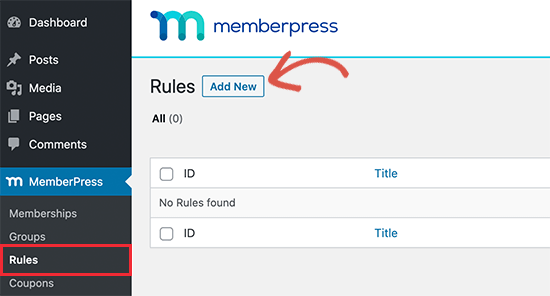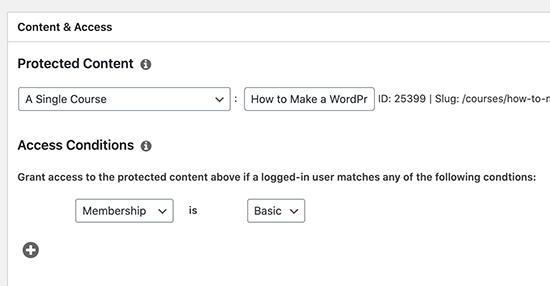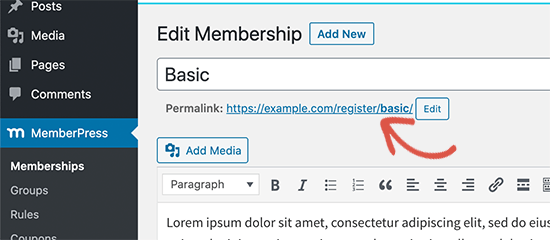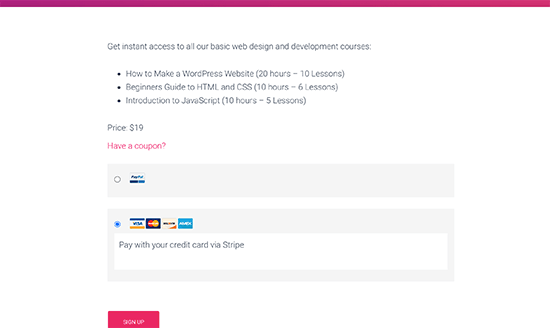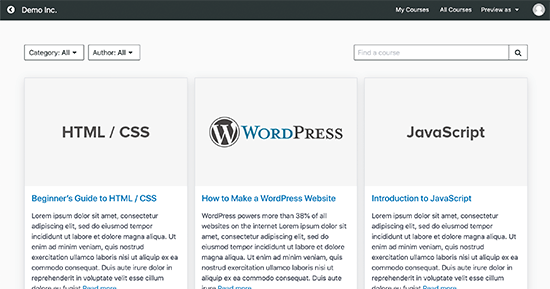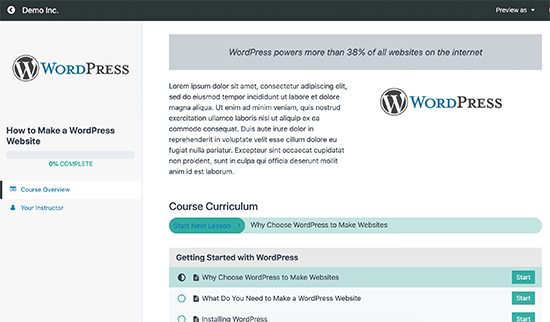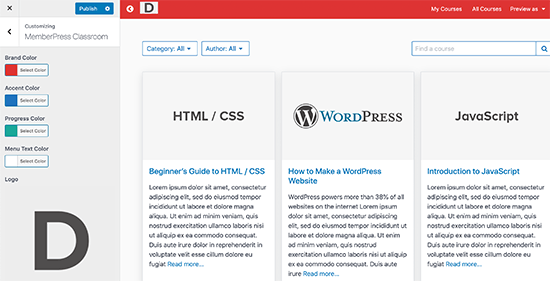Did you know that you can create a successful online course with WordPress?
Selling online courses is a popular online business idea that you can start with a very small investment and no technical knowledge.
Whether you’re looking to create an online course to sell or simply add an online course for your existing students, this tutorial is for you!
In this guide, we will show you how to easily create an online course using WordPress. We will also show you how to make money from it and make your online course a success.
What Do You Need to Create / Sell an Online Course?
You will need the following things to create an online course.
- A course idea where you can help others learn new skills.
- A domain name. This will be your website’s address
- A WordPress hosting account. This is where your website’s files are stored.
- An eLearning management add-on (also known as LMS plugin) to create and manage courses.
- Your undivided attention for the next 45 minutes.
You can build an online course with WordPress in less than an hour, and we’ll walk you through every step of the process.
Let’s get started.
Step 1. Setting up Your WordPress Website
There are plenty of website builders and online course platforms that you can use to build your own website. However, we always recommend WordPress because it offers you the maximum flexibility and freedom.
WordPress powers over 39% of all websites on the internet.
There are two types of WordPress, and beginners often end up confusing them.
First, there is WordPress.com which is a hosting service, and then you have the original WordPress.org also known as self-hosted WordPress.
We recommend using WordPress.org because it gives you access to all the WordPress features that you’ll need.
Step 2. Install and Setup MemberPress LMS Plugin
Now that your WordPress website is ready, the next step is to install and setup a Learning Management System add-on. This will allow you to create your online course and add it to your website.
First, you need to install and activate the MemberPress plugin.
MemberPress is the best LMS plugin for WordPress. It is an all-in-one solution with complete course management, lesson plans, subscriptions, access control, payment management, and more.
Course creators around the world use MemberPress to create profitable courses and earn over $400 million dollars every year.
Upon activation, you need to visit MemberPress » Settings page to enter your license key. You can find this information under your account on the MemberPress website.
Once you have entered the information, click on the ‘Activate License Key’ button to store your settings.
Next, you need to switch to the ‘Payments’ tab and click on the (+) add button to set up a payment gateway. MemberPress supports PayPal and Stripe (Authorize.net support included in Pro and Plus plans).
Simply select your payment gateway and then fill in the required information. You can also set up multiple payment methods by clicking on the (+) button again and repeat the process.
Don’t forget to click on the ‘Update Options’ button to save your payment settings.
Step 3. Creating Your First Course
The course creation process in MemberPress makes it super easy to create and manage online courses. It comes with a very easy to use course builder that allows you to create courses, add sections, edit lessons, and more.
First, you need to visit MemberPress » Courses page where you’ll see a button to install and activate the courses addon.
Clicking on it will automatically install and activate the MemberPress courses addon, and you’ll be redirected to the courses page.
Simply click on the ‘Add New’ button at the top to create your first course. This will launch the MemberPress course builder screen.
First, you’ll see the ‘Course Page’ where you need to provide a course topic, title, and description. MemberPress course builder uses the default WordPress block editor, so you can get creative and make an impressive course page layout.
You can also add ‘Course Categories’ and ‘Course Tags’, set a featured image, and provide a course page excerpt under the course page settings.
Step 4. Adding Sections and Lessons to Your Course
MemberPress also makes it easy to quickly start adding course contents for each course without switching to a different page.
Simply switch to the ‘Curriculum’ tab and click on the Add Section button to create your course outline.
You need to provide a title for a section and then click on the Add Lesson button under the section to add lessons.
After adding a lesson, you can start adding lesson content by clicking on the edit button next to each lesson.
You will be asked to save your changes after that your lesson will open up with the familiar block editor screen.
You can add your lesson content here with the full advantage of the block editor. This allows you to upload images, embed videos, add text, offer downloadable digital products such as powerpoints, PDF eBooks, actionable worksheets, and other course materials.
Don’t forget to click on the Update button to save your lesson. You can return back to the Course by clicking on the ‘Back’ link at the top of the editor.
Repeat the process to add more lessons to your course.
Once you are finished adding course content, don’t forget to click on the ‘Publish’ button to make your course accessible to eligible users.
Step 5. Creating Course Membership Subscriptions
MemberPress allows you to easily sell online courses with subscription plans. You can create as many membership plans as you like, and users can select a plan to pay for your online course.
You can also sell all your courses under single membership, offer free courses, or you can add different courses for each plan. This depends on how you plan to structure your sales funnel.
A lot of people use a combination of free courses and paid courses to build their audience and maximize passive income.
To add a membership, simply go to MemberPress » Memberships page and click on the Add New button.
Next, you will reach the create new membership page. From here, you first need to provide a title for this membership plan and then add some description.
After that, you can enter the membership pricing under ‘Membership Terms’ box on the right. You can also choose the access duration from lifetime, expire (recurring), or fixed expire.
Next, you need to scroll down to the Membership Options section. This where you can configure advanced membership options like sign up button, welcome email, pricing box, and more.
Once you are finished, you can click on the Publish button to save your changes.
Repeat the process if you need to create more membership plans.
Step 6. Restrict Course Access to Membership Plans
The best part about using MemberPress is its powerful access control rules. They allow you to decide who gets access to your online course.
Simply, go to MemberPress » Rules page and click on the ‘Add New’ button.
This will bring you to the Rule wizard page. First, you need to select the content you want to protect under the ‘Protected’ content section.
For instance, here we have chosen a single course under the protected content.
Below that, you need to select the conditions that need to be matched for users to access that content. For instance, we have chosen our membership plan here.
Don’t forget to click on the ‘Save Rule’ button to save your settings.
Step 7. Adding a Link to Course Sign up and Register Page
MemberPress makes it easy to easily send users to the page where they can register and sign up for your course by purchasing a membership plan.
It automatically generates a link for each membership plan that you can add anywhere on your site.
Simply edit a membership plan and you’ll see the link below the membership title. You can also manually type in your domain name followed by /register/your-membership-title/
You can add this link anywhere on your website in a post, page, or navigation menu and it will take users to the registration page.
You can even share this link in your sales pages, webinars, podcasts, Facebook group, social media, and other traffic channels.
Step 8. Preview & Customize Your Online Course
MemberPress allows you to use the classroom mode by default, which means your course pages and content will always look good regardless of which WordPress theme you are using.
You can simply go to view a course by visiting:
https://example.com/courses/
Don’t forget to replace the example.com with your own domain name.
You’ll see all your courses listed there. You can click on the ‘Preview as’ menu to see how it would look to the logged out users.
Clicking on a course will open the course, and you will be able to see course overview, sections, and lessons. It is super easy to navigate and also keeps tracks of user’s progress so that they can continue where they left off.
You can also customize the course page templates by visiting Appearance » Customize page and clicking on the ‘MemberPress Classroom’ tab.
Here, you can upload your brand logo and change colors to match rest of your website.
Don’t forget to click on the Publish button to save your changes.
Step 9. Selling Your Online Course with More Powerful Features
Both MemberPress and WordPress are super flexible. This allows you to use them with any other tools to grow your business and reach more users.
For example, you can create a powerful membership site / community that offers paid content and perks along with courses.
You can also use MemberPress with other LMS plugins like LearnDash. This allows you to use LearnDash for course creation and use MemberPress for powerful subscription, payments, memberships, and other features.
Alternatively, if you want to sell other items like physical goods related to your course, swags, etc, then you can use WooCommerce to manage payments and orders. This will let you build a proper online store for your website.
Step 10. Promoting Your Online Course
The other advantage of WordPress + MemberPress combo is that it also makes it easier for you to promote your online course and make money online.

